Progress, And A Few Thoughts On Thresholds (Part 1)
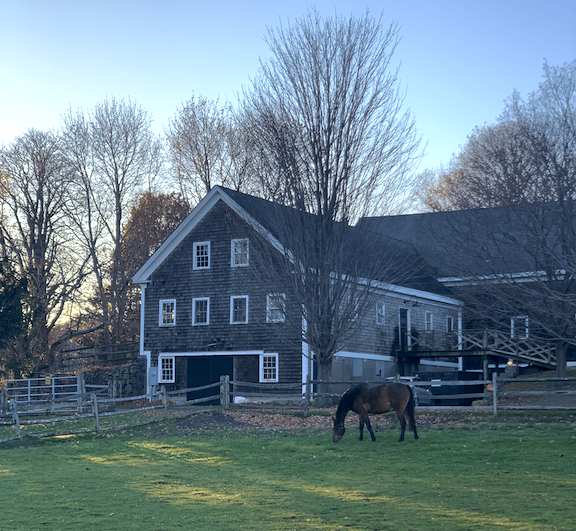
It's hard to believe there is only one month remaining in this year. Going forward, I am hoping to be a bit more consistent about posting updates more frequently, as I often find myself sifting through a month's worth of photos, videos, and various notes about our training, resulting in a lot of information for a single post. Posting briefer updates more often, even with just a single photo or video, could still convey the level of depth and transparency I'm aiming to give.
On that note, before I jump into today's post, I want to clarify something I wrote in my last post. When I re-read it, I realized that in the way it was written my meaning wasn't perhaps entirely clear. I'm referring to my thoughts toward the end of the post, where I was using the example of a fledgeling bird to describe some of the emotions I felt in fostering more independence and confidence in my horse through sensitivity in training. Most readers probably already understand my meaning in the comparison, but as it might seem to convey something that contradicts what I believe, I wanted to clarify an important point: driving horses do not make decisions, nor should they be put into positions where they have to make them. Young, green, driving horses in particular do not get to make decisions! In fact, he has only one job, and it isn't deciding what the team will do next. Right on cue, the accomplished driver Muffy Seaton has this to say (excerpted from her wonderful book, Bending the Driving Horse):
"Actually, the driven horse's only job is to pull the carriage. All the other jobs, like keeping the horse balanced, are the responsibility of the driver. When you are driving a horse, he does not know where you intend to go until you tell him."
Muffy Seaton is talking about balance here, but she illustrates my point and describes why I believe this. Horses with jobs that require some level of independence or autonomy in assisting their human handlers, such as working ranch horses, therapy and police horses, horses partnered with riders and drivers with physical challenges, some trail or endurance horses, and even the beloved 'push-button' camp ponies trusted to keep little kids safe in the saddle all day long, can make decisions when needed, but even those decisions should be a reflection of their solid training in a highly specialized discipline. I know others may disagree, particularly expert drivers who drive tandems or four-in-hands which requires a lot of trust in their highly skilled equines, or trainers who use liberty in ridden dressage or to create breathtaking creative performances, but at least at this point in time, I do not put Levi in any situation where I am not clearly telling him what he should do through the use of my aids. This doesn't mean being a despot or a meanie, of course, because my asks are as soft as they need to be, and I am always filtering my responsiveness through attunement. It's similar to a parent offering their child some control over a choice that must be made, e.g., "do you want to wear the red coat or the blue one to keep you warm outside in the snow?" where the implication is that a coat must be worn and it is expected that the child would protest (and the reason the coat is needed is also explained to the child) but the child perceives they have some agency. Because Levi is a horse and not a kid, it's much simpler and we don't have to go through all that explanation, thankfully. In any case, without writing an entire book about this, I wanted to clear that up, and because it somewhat sets the stage for the topic of a related follow-up post (Part 2) coming soon. In this post, I will share some updates on our progress since October. We have been hard at work!
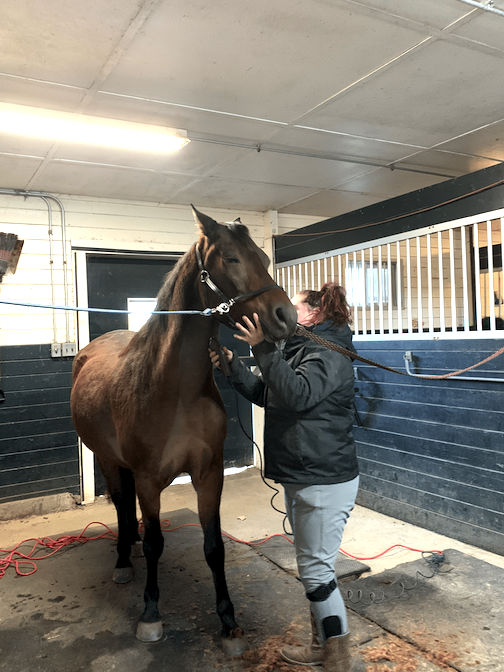
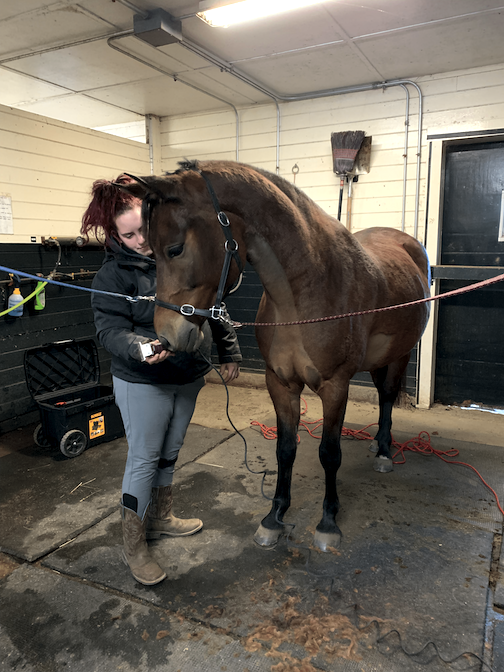
At the beginning of the month, I realized Levi's plush winter coat was making it difficult for him to cool down properly after training. I decided to that a modified trace clip would be a good tradeoff for keeping warm while helping release body heat when needed. Body clipping, like braiding and other aspects of horse grooming, looks wonderful when done well and very obviously terrible when it isn't. I haven't clipped Levi before, and November is not the time to practice. Not wanting poor Levi to bear the brunt of my incompetence at shaving anything other than his bridle path, I decided that professionals should handle this job. I also like to support local equestrians who run small businesses, so I reached out for some help from Cortney Howarth of Cortney's Equine Clips (check out her work at https://www.facebook.com/CEQClips). Cortney has known Levi for a long time, and he remembered her right away. She has photos of her work on her Facebook page; if you are near northern Massachusetts and would like some help with body clipping your horse, bathing, or grooming for shows, she is a fantastic resource and I highly recommend her. She advised that we do a modified trace clip, removing hair just from the neck, jaw, and chest, between the front legs, around the girth area, and two small 'half moons' between his booty cheeks and hind legs. The rest of his fur was untouched so he can stay toasty. Levi is already used to the noise and sensation of clippers and they do not faze him; although he has never been body clipped before, he relaxed right away in Cortney's excellent and kind hands, and felt very special getting this 'spa' treatment. I was so happy with the result! This clip has kept him from sweating on some of the warmer days this month without making him too cold. During freezing cold weather, I blanket Levi when he is turned out. He usually gets downright grumpy in the cold, which I completely understand, so I didn't want to remove too much of the heavy coat.
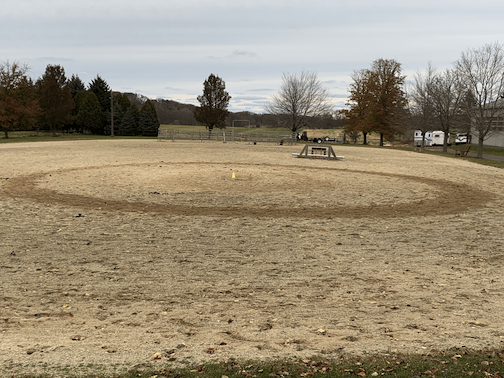
During the last half of October to now, we've been slowly building up work under cart, in addition to continuing all of the previous training on fostering balance, posture, and alignment. I'm very happy to report that since placing more focus on straightness in training, I have seen profound changes in Levi's physical structure with the most pronounced effect on the quality of our circles in both directions. I also see an increased range of motion in the hind legs (extension), more forwardness, and better transitions. He is also less stiff in his right shoulder as well. I firmly believe that if we continue this work through the winter, by spring we will have addressed much of the now rather minor muscular asymmetry and helped Levi become much more supple on both sides, leading to more balance and comfort working under cart. In the left image above, you see our tracks after a somewhat challenging long-lining workout on 20 m circle; the track was about a meter in depth to reveal some variation in bending, but otherwise- his performance is not too shabby. We're getting much more consistent circles now, as revealed by the uniformity of these tracks; the path made by the tracks will also get thinner over time, as precision and strength improve. This long-lining workout isn't my own design, but comes from the carriage driver Andy Marcoux, who runs a fantastic driving resource called Coachmans Delight, and offers online courses and lesson plans. The link to this particular lesson plan used to generate all these nice circles is found here (https://coachmansdelight.com/elementary-long-lining/) and I will talk a little bit about this workout and its benefits for us in the next post.
Our 30 minute walking warmup, which is done in hand in a halter and lead rope before every single training session, remains key to this progress. I implemented this as a routine back in January as a way to help Levi overcome some of his challenges in a new environment, and to gain more confidence and fitness without putting too much stress on his body. I have talked about the importance of this warmup before, but after doing this consistently for the better part of a year, I see numerous transformative positive changes in this horse to the point we will always keep this in our training regimen. In fact, I think it is the key to our success in many ways. The warmup is not just 30 minutes of dawdling around, but has very specific phases and I use the environment on any given day to our advantage regardless of the conditions. Levi is a fairly 'cold' horse in the sense that he needs a longer warmup for his muscles and his brain; some hotter horses act like dirt bikes you can jump on and roar off down the road, but he isn't one of them and requires a good warmup and warm down.
I want to share the structure of this warmup in case it benefits anyone (if you don't enjoy training details, feel free to skip this part and the next paragraph). We do this warmup in hand but it could easily be done under saddle as well. In fact, we will do exactly that in the future also. It's simple but can be challenging for him mentally, and sometimes for me depending on the weather! We begin without any fanfare right out of the paddock and the warmup starts in the same direction every time. Any and all conditions are met; we usually don't call the warmup on account of weather. We have called it on account of greenheads, however, but that is different - those things are straight from hell! Levi often comes galloping up to me out of his paddock to work, which always fills me with joy because it feels good knowing he likes working with me. I think he enjoys going for these walks because they are interesting and because I've designed them to make sense and feel good to him. Levi is soothed by a routine even if external conditions are always different; the time to push thresholds will come at a later point in the workout afterward, but when just beginning the work for the day, I like to set him up to not worry about anything. There are a few crystal clear expectations of conduct during the warmup that never vary regardless of context. Firstly, there is absolutely no eating allowed in the warmup. No pulling away to graze or snatch grass is allowed. I generally don't allow him to eat during training since our workouts are relatively brief and I don't want him to be uncomfortably full while working; he is never worked without having been fed beforehand and the table will wait. Second, he must listen to my aids and respond to them as he has been taught, every time. I am looking for lightness and slack on the lead rope and he carries himself; he is to walk straight and parallel to me. Sometimes if he offers more forwardness, e.g walking out faster than I asked or breaking into a few steps of a jog during a brisk walk, I will allow it and use the increased forwardness for our advantage. My sentiment is that forwardness is a gift from the gods and should not be punished. If he is too fast, I'll just ask him to come back down. Finally, he is never allowed to interact using herd behaviors such as shoving or biting me; he can express displeasure or worry as long as there's no threat involved. If there is a threat, there will be a response and it will not be a nice one. Finally, he should halt and stand when asked, 100% of the time. These are the rules of the warmup.
The walking warmup serves an important purpose in that I use it to set the rhythm and tempo for the following workout. I use the first ten minutes to check in with him and notice if he has any complaints or is concerned about anything in the environment, to get him tracking up well, and to get him soft and forward. I use that time to assess his mood and what his threshold is on that day (I talk about thresholds below in more detail, and how I use this information for training), and adapt accordingly. Once the rhythm is set, we've exchanged our pleasantries, and he's nice and forward, we go into the next stage which is legging up over a variety of surfaces while keeping our rhythm and forwardness consistent. I use the entire farm for these warmups, so we cover grass, sand, gravel, hard packed dirt, concrete, old carpet, arena footing, dead leaves, obstacles, mud, puddles, etc., and I use every single hill I can find no matter how small. I use every tree, rock, object, other horses, people, tractors, cars, dogs, trailers, any distractions I can see - you name it - if I see it, we will try to work around it. The brisk walking on varying terrain and footing of different depths, including more concussive surfaces, serves to toughen his feet and build bone and tendon strength in his lower legs without putting undue stress on his joints. He has naturally very good feet, but this work has made his feet even stronger. We practice halt and stand on hills, and sometimes back up small hills for a couple of steps (this is hard for them - try it!). Several times, I ask for a halt and stand and drop the lead rope and wait until he tries to move off. If he does, I put him back in position and repeat. At 15 minutes, I switch and lead from the right so there is equal time leading from both 'reins'. He confidently leads equally well from either left or right, never crowding nor drifting from either side. He keeps his head near my shoulder-elbow, and I do not allow him to cross behind me or get too far in front. To encourage him to go forward I use my voice and also carry a lunge or buggy whip during our walks to tap the ground or his side where my leg would be placed in a riding position. During the last ten minutes, we continue the warmup in the area we'll be primarily working in that day; if it is the indoor arena, we walk the exact pattern or do whatever it is we will be focusing on that day, at a good forward walk. If we are working outside, we do the same. This warmup is a great opportunity to introduce and teach new behaviors and cues, and to build trust and confidence. It also paves the way for future work under saddle, and is groundwork for taking Levi out onto the trails beyond the property. There is a well-designed, driveable 2-mile trail loop bordering crop and cattle fields, woods, farms, and wetlands, accessed right from the property. I intend to start using this for our warmups. Eventually, we will use this trail to condition while driving, While we are not yet ready for this, if I solely focused on driving this loop in the cart for the next six months, I think I could make more progress with this horse than I would with my current driving program, and I am strongly considering modifying my plans to get us to that point sooner.
This video above is rather long and boring as we are working on circles in the cart, but I've uploaded the full version instead of clips because I wanted to show how far we've come in regard to forwardness, confidence, balance and rhythm at the walk under cart. Comparing this to our earlier driving videos, the progress is clear. For this workout we just used half of the arena space. The reason we aren't using the entire arena right now is kind of silly; there is a groundhog, or family of them, tunneling beneath the arena, and apparently a rider discovered this while jumping and potholes suddenly appeared! I have seen this deadbeat rodent scurrying around in the indoor before and he/she/they is/are quite brazen in their lack of fear of people or horses. Currently, there's a solid attempt at trapping this individual which can be kind of seen in the video. Levi wasn't too concerned about the sudden appearance of the Road-Runner style trap, but he doesn't like surprises when he's working and he doesn't trust that the fat marmot won't make a sudden appearance and ruin his vibe, so we decided to avoid all potential chaos and work at the opposite end. If you watch only the first few minutes of the video, you probably don't need to see the rest unless you have a passion for watching endless driven circles; he is consistent and moving along very well. However, there are a few walk to halt transitions at the end that I thought were very nice highlights for him; these are from 8:11 to the end of the video at 9:17, with my very favorite transition (topped by a lovely square stand!) at the end. So, we have focus of attention, responsiveness, forwardness and capturing of that rhythmic motion of the walk right into the halt. Perhaps the clearest description of the goal of the halt transition comes from Andy Marcoux, whose long-lining lesson plans (I showed the link to the one we've been working with above, but you can find them all here: https://coachmansdelight.com/online-learning/) we have been striving to master:
Remember, the halt is not the end of movement. It is the capturing of movement in immobility. Think of asking your horse to step forward into the halt, rather than holding him back until he can no longer go forward.
Don't you love that description of the halt?! This is so clearly and beautifully explained.
(I have to apologize for my appearance in these recent driving videos, as in my non-Levi life I have been burning the candle at both ends, and as it is now below freezing here in Northshore Mass, I'm bundling up big time. Double leggings and socks with thick sweaters below Michelen-man bulky down jackets, and a mug revealing 5 hours of sleep per night for the past three months, do not a good turnout look make but at least I am warm and Levi doesn't care how I look anyway. Joe still likes me too, so that's great as well. Outside of my work with Levi, I am a STEM assistant professor at a major teaching hospital and university, and unlike, say, playing the violin or doing standup comedy, my passion for training my young Morgan carriage driving horse has little to nothing in common with my career, so this hobby (lifestyle?) has to fit into my already packed schedule. Anything resembling self-care has now been captured by equestrian pursuits and is being held hostage. If training and competing horses is considered a form of self-care, it is an expensive one on par with plastic surgery, but it (as well as my work in science) is so much more rewarding! Life is not always so busy, just lately I have had to dig deeper and get it all done.)
Below is another driving video, this one much shorter, showing part of a recent drive outside the arena. This was his third workout on grass, and we chose this site because there were some little hills that were gentle but would make it clear to him what his breeching is for. Walking up and down hills in the cart is not something you can replicate easily in the indoor (transitions can help!) and we want to get Levi out driving on the farm as long as the weather holds up. I was proud of how well he did despite the loud traffic on the road. It isn't in this video, but near the end of our drive, a person on a motorcycle rumbled up to the gate and drove right past, and he listened and stood completely still when I asked him to!
Part of our improvement in both forwardness and bend is coming directly from information from the book I referenced earlier, Bending the Driving Horse, by Muffy Seaton. I could not find a copy of this book available anywhere; undaunted, I contacted Muffy directly despite not knowing her (she is lovely and helpful; thank God for you, Muffy Seaton), and purchased both a print copy as well as an accompanying DVD. I haven't yet watched the DVD but I am sure it's going to be a barn burner for us. The book is a quick read but it so clearly explains the missing pieces I've been searching for here that I almost wanted to cry with joy. Anyone who has the answer to my problem is number one. I was delighted to discover that I actually almost had it right - I had been rightly connecting the use of half-halts on the outside rein in generating the proper degree of bend, but when I needed to execute this to be most effective was not clear to me somehow, despite everything else we've been working on. Muffy explains quite clearly that balance is what is at stake here, and balance is what the driver helps the horse achieve when the outside and inside aids are correctly applied. Is anyone sensing a theme here lately?? I did exactly as she so clearly described in her easy-to-follow training exercises, and immediately Levi responded with much better contact, better connection, and more responsiveness to the outside rein. Like many driving horses he still finds it a little harder to bend to the right since this side is stiffer, but the exercises she offers will help us with this. It is hard to see from our video in the indoor arena, but it is more obvious on the box seat that the circle to the right is harder for him to keep straight. Muffy's instruction and theory on this subject are too complex for a deeper dive on an already lengthy post, but I wanted to offer some encouragement to drivers who struggle with this as well, or have horses who do. I think the DVD can still be purchased online and hope you can find it; if not, contacting her for these materials might be a good option.
I intended to share the results of our recent training with thresholds (not training thresholds) from the past four weeks, and also share the structure of our current training program, but this is already a very long post. I am going to split this into two parts. This post is an update on our progress. Part 2 is going to be much more interesting, I promise! Stay tuned!
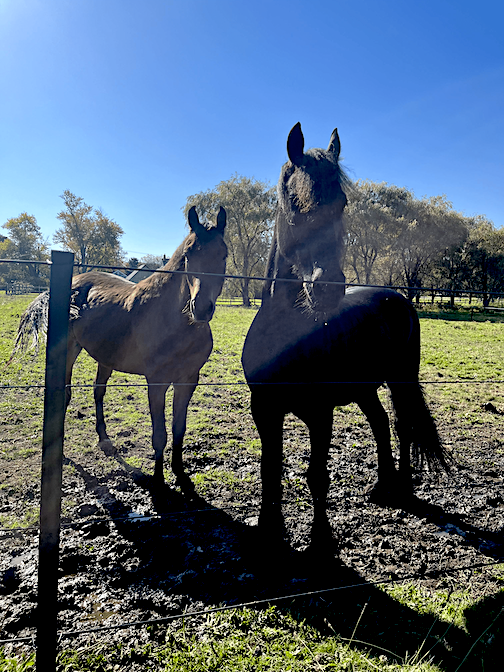
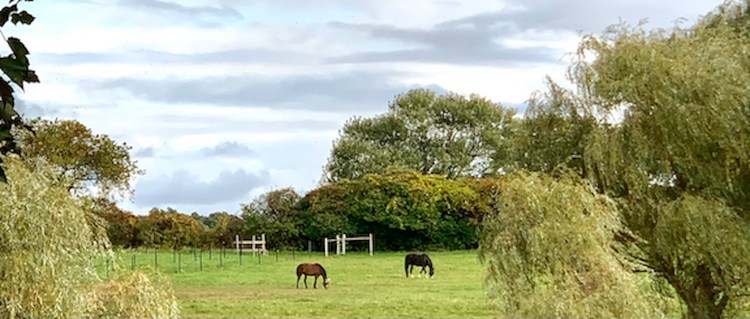
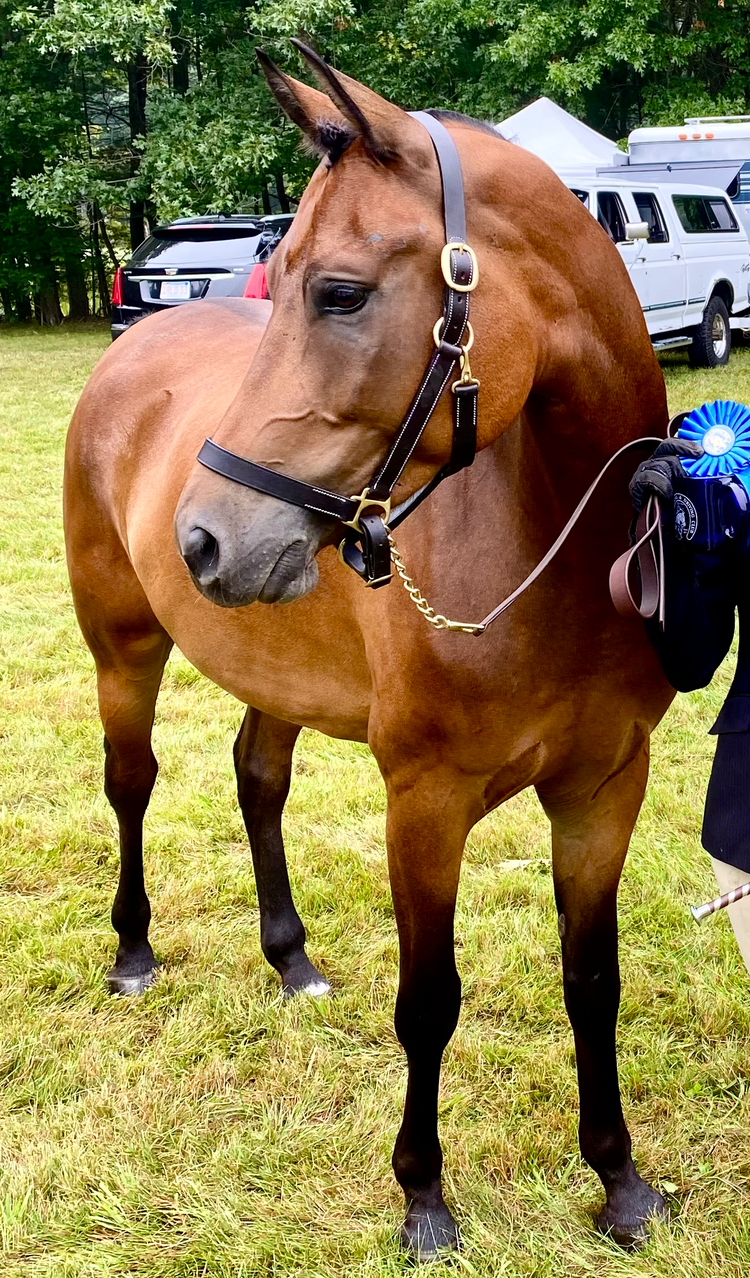
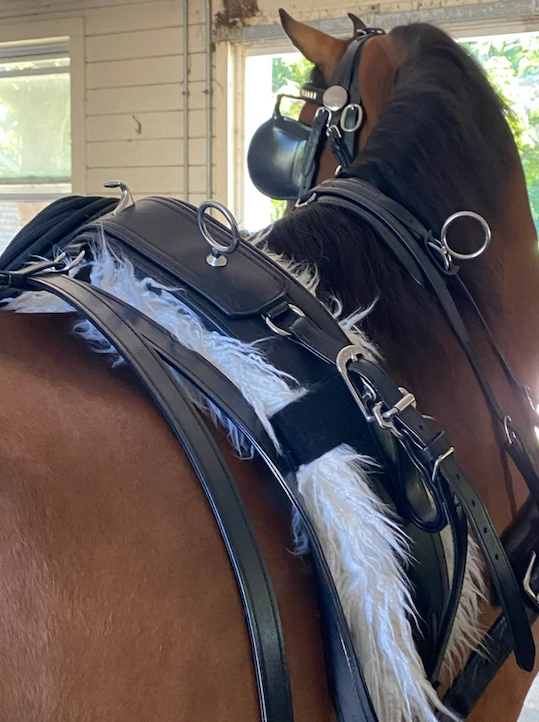
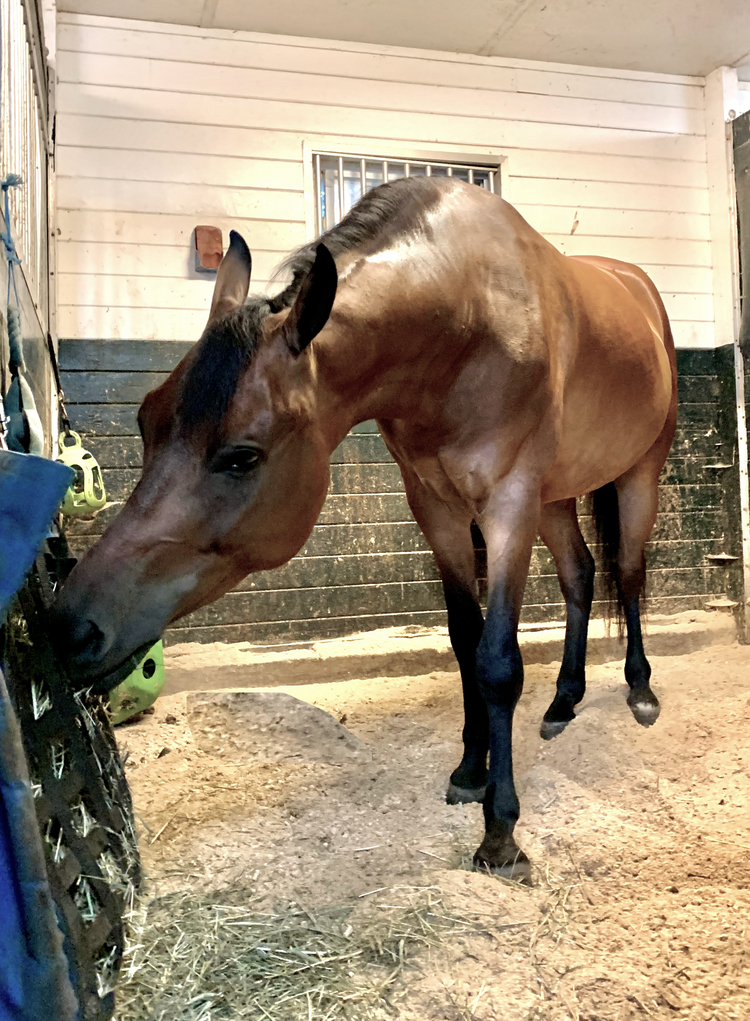
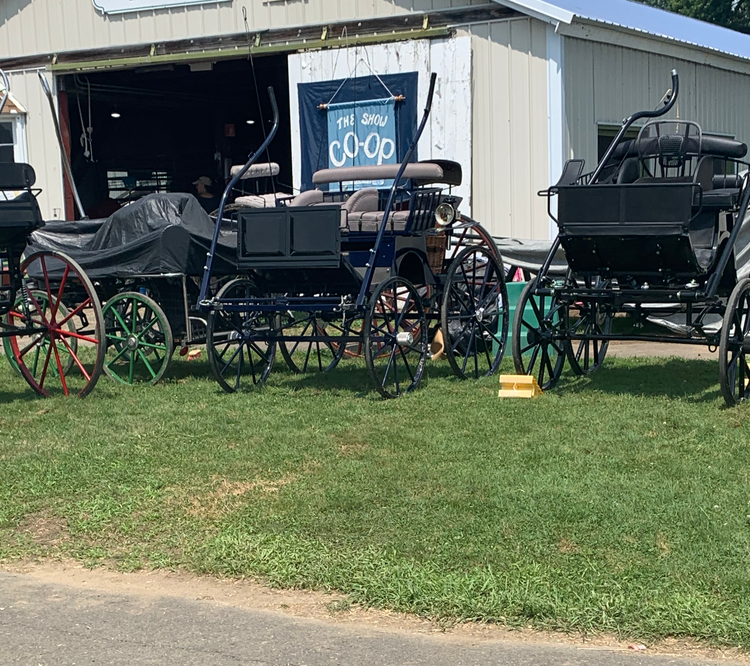
Member discussion